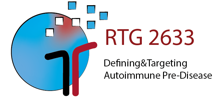Farbod Bahreini

CD4+ T cell receptor sequences during progression towards experimental pemphigoid
In this project, we will investigate the process by which a skin-blistering pemphigoid-like autoimmune disease can progress from a pre-disease state to disease-related manifestation in a mouse model. During this project, we will focus on the identification of the disease-specific antigen binding sequence of CD4+ T lymphocytes, characterization of the disease-specific alterations in the Th1, Th2, and T regulatory populations, and defining the factors that participate in the prevention of pathogenesis. Following the injection of the recombinantly-produced mouse collagen type VII, as an autoantibody inducer in mice, we will compare the T cell receptor-Beta sequences and transcriptomes of draining lymph nodes and skin lesions of healthy and diseased mice. Fluorescence-activated single-cell sorting will be employed to analyze T cell subsets using surface markers, transcription factors, and cytokines. Previously published data (Niebuhr, Markus, et al. "Epidermal Damage Induces Th1 Polarization and Defines the Site of Inflammation in Murine Epidermolysis Bullosa Acquisita." Journal of Investigative Dermatology 140.9 (2020): 1713-1722) illustrates that EBA skin inflammation can be significantly suppressed in mice treated with the xenogeneic protein Ovalbumin prior to the induction of autoimmunity. In the A7 project, we will study if such pre-treatment would affect the T cell receptor repertoire using pair-end sequencing with the Illumina Miseq system.

- People
- Doctoral Candidates
- Merabell Adem
- Katja Adriany
- Farbod Bahreini
- Estelle Bergmann
- Swayanka Biswas
- Jana Buhre
- David De Luca Laredo
- Kaan Ersoy
- Ferdinand Gebauer
- Sen Guo
- Veronika Hartmann
- Michelle Hein
- Luise Janusch
- Maj Jäpel
- Anna Knauer
- Valentin Kneitz
- Maximilian Lahmer
- Wing Yu Lee
- Daniel Mehlberg
- Sahar Mehrabani
- Afsaneh Mehrpouyan
- Sadegh Mousavi
- Milica Novovic
- Justus Ohmes
- Bianca Opelka
- Colin Osterloh
- Cristian Papara
- Tina Rastegar Lari
- Rochi Saurabh
- Alessia Maria Sbaraglia
- Jovan Schanzenbacher
- Mareile Schlotfeldt
- Carolin Schmidt
- Solveig Lea Schmidt
- Leon Schmidt-Jiménez
- Nora Schoell
- Salomini Sinnathurai
- Sarah Stenger
- Chiara Walczyk
- Nele Wellbrock
- Julia Wimmer-Gross
- Natalia Zappe
- Jianrui Zheng
- Luca Zillikens
- Carla Zünkeler
- Principal Investigators
- Associated Scientists
- Administration
- Doctoral Candidates



